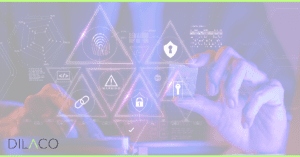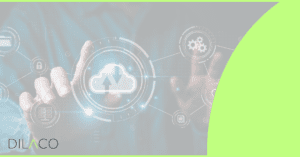The exponential growth of data has revolutionised the way companies work. Gigantic amounts of information are constantly being generated, stored, and transmitted. Companies are used to protecting these data through cyber security measures such as firewalls for the network, endpoint protection on computers and security awareness training for their employees. All these protective measures are necessary. It’s good to protect the network, the devices on the network and the employees’ mindset. But none of these protective measures is flawless and few companies protect the actual data itself. That data leaves your company through various channels such as E-mail, OneDrive, Dropbox, USB sticks, etc and, as it’s almost impossible to secure all those channels, only a data-centric security approach can secure that data regardless of the storage location or transmission channel.
In this blog post we will explore the key concepts of data-centric security, the benefits it might have for your company and the requirements to implement it.
Understanding the concept
Data-centric security enables companies to protect the data itself, instead of relying exclusively on defending the infrastructure or network around it.
The Data Centric Security Market, valued at $4.2 billion (≈ €3.8 billion) in 2022, is anticipated to reach $12.3 billion (≈ €11.2 billion) by 2027.
– Markets and Markets, 2022
There are some key actions that should be implemented when it comes to data-centric security:
- Granular Access Control: Aiming to restrict data access, granular access controls are applied based on user roles, privileges, and permissions. Unauthorised individuals will then be less likely to view, modify, or even delete sensitive information.
- Contextual Access Control: This refers to adding additional contextual factors (e.g., location, device, time) when permitting data access.
- Classification: Data should be classified according to its sensitivity level, allowing businesses to prioritise cybersecurity measures.
- Encryption: Encryption plays a vital role in this security approach. Data is converted into ciphertext, ensuring that even if unauthorised access is obtained, the data won’t be deciphered without the right decryption keys.
- Masking and Tokenization: The former refers to the replacement of sensitive data with fictional yet realistic data. The latter involves the substitution of sensitive data with tokens that have no meaning when outside of the system. Both techniques reduce the risk of data exposure.
Why follow the data?
Following your data pathways is crucial when it comes to data-centric security. This principle accentuates the need to track the data wherever it goes, while offering adequate protection. The logic behind it is simple: by understanding how your data moves and transforms within your organization, you will be able to implement the right security measures for your data, from its creation to sharing, storage and disposal.
Remember: the data needs to be followed, not only the end-user. If you focus on the end-users only, then there is a high chance that when they click on a phishing e-mail or lose their computer the data will be lost. Think about it as a plan B: when your plan focused on the end-user fails, you have always a plan B in action, pretty much like an extra layer of protection.
As reported by IBM, the average expense related to data breaches has surged by 12.7% from $3.86 million (≈ €3.53 million) in 2020 to $4.35 million (≈ €3.97 million) in 2022.
Protecting your data goes way beyond a good firewall or protecting your systems, because your data not only moves within your organisation, but exchanges also happen with the outside world. Data is transferred from your organization through several ways (via the cloud, e-mail, USB sticks and external drives), and all that needs to be taken into account.
According to Ponemon Institute statistics, a staggering 77% of companies lack adequate preparation and planning to fend off potential attacks or data breaches.
With this approach, mapping your data becomes an essential pillar. To be able to protect your data, you need to continuously map the pathways through which the data flows and take different privacy levels into account.
How a data-centric approach can help you and your business
✅ By focusing on the data itself, data-centric security provides an additional layer of protection, enhancing data safe keeping. Thus, in case of a cyber-attack, the encrypted data remains safe, reducing the risk of data breaches.
✅ In order to prevent sensitive information from being leaked or mishandled, data loss prevention strategies can easily be implemented and integrated into this approach.
✅ Your data lifecycle management will also benefit by following this methodology. It will allow you to perform a comprehensive management, while ensuring that your data is safe during its entire lifecycle.
✅ Furthermore, a data-centric approach will be helping you to comply with data protection regulations in an easy effective way.
But how can you effectively keep track of all your data?
Automatization is the answer. Dilaco works with the best partners to bring you high-quality automated solutions.
With KeyCaliber, you will be able to automate the process of identifying your crucial assets and analyse the associated risks and potential attack routes to safeguard these assets. This empowers your teams to prioritise necessary remedial actions and optimise resource allocation effectively.
On the other hand, with Tenable you will get a comprehensive overview of vulnerabilities to comprehend cyber risks effectively. This insight guides you in prioritising which vulnerabilities to address first.
Putting it in a simple way: KeyCaliber shines the light on the assets; Tenable shines the light on the threats.
Interested in knowing what else you can do in order to improve your cybersecurity landscape? Take a look here.

This article was brought to you by:
Willem Magerman
CTO/Cybersecurity Specialist
Get in touch





